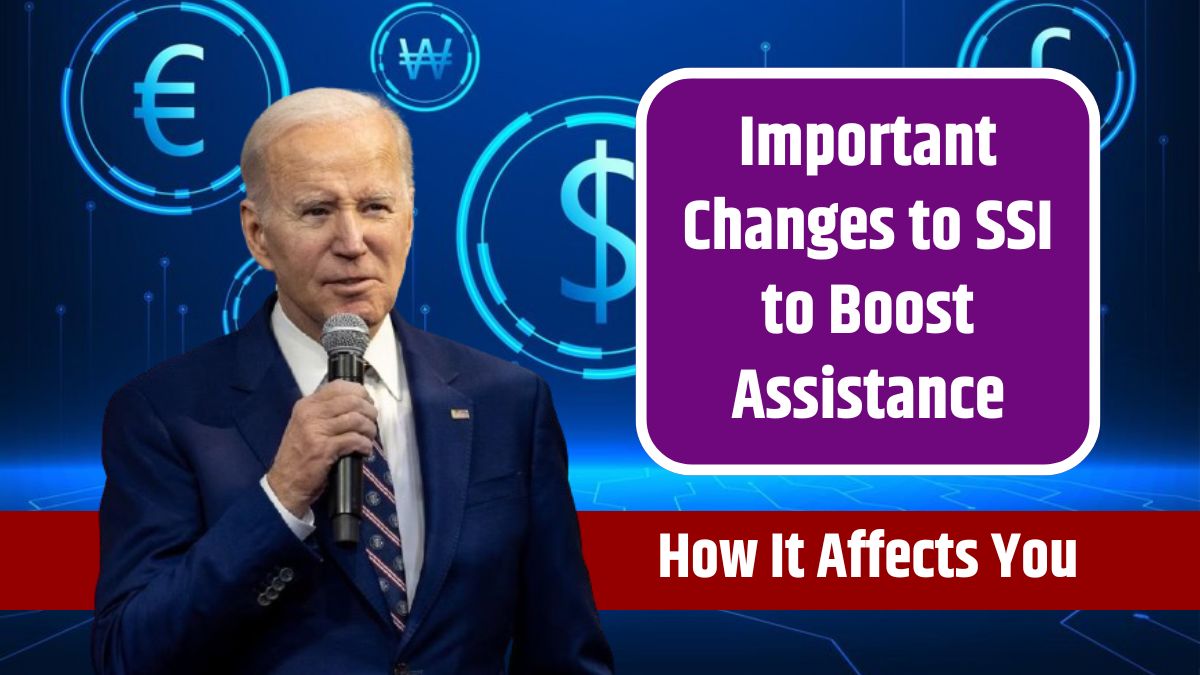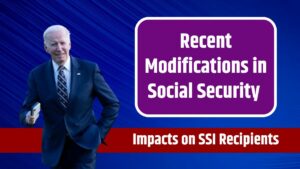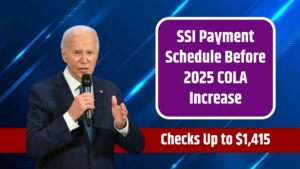The Social Security Administration (SSA) has introduced several important updates to its Supplemental Security Income (SSI) program. These changes are designed to provide greater financial support to people with low incomes and limited resources, making it easier for more Americans to access the benefits they need. These updates aim to simplify eligibility, boost benefit amounts, and streamline processes for both applicants and recipients.
Let’s look into the significant changes and what they mean for SSI beneficiaries.
Food assistance
One of the major changes taking effect is the exclusion of informal food assistance from eligibility calculations. Previously, if someone received food from family or friends, it was considered part of the agency’s “in-kind support and maintenance” (ISM) rules. This could reduce the amount of SSI payments an individual received.
Starting Monday, these informal contributions will no longer affect an applicant’s benefits. As a result, over 90,000 people will see an average increase of $131 in their monthly payments. This update will provide a significant boost to those who rely on SSI, ensuring they have access to more substantial financial support.
By removing this barrier, the SSA is promoting a more equitable safety net for individuals with low incomes, making sure that basic necessities like food do not stand in the way of their benefits.
Rent subsidies
Another vital update relates to rent subsidies. Previously, people who benefited from rent subsidies in some states saw reductions in their SSI payments. This rule only applied in seven states, but starting Monday, the change will be implemented nationwide. This expansion will allow approximately 41,000 individuals to benefit from an estimated $132 increase in monthly SSI payments.
This is a game-changer for individuals who rely on subsidized housing. Previously, these subsidies could lower the amount they received through SSI. The SSA’s new policy will prevent rent subsidies from negatively impacting SSI benefits, providing much-needed relief to those who face high housing costs.
SSI and SNAP integration
The third major change involves the Supplemental Nutrition Assistance Program (SNAP). The SSA will now include SNAP benefits as part of the calculations for SSI eligibility. This move aims to simplify the SSI application process for households receiving SNAP benefits.
By considering SNAP benefits in the SSI calculations, the SSA is reducing the reporting burden on households that receive multiple forms of public assistance. This adjustment will allow more people to qualify for SSI and, in many cases, increase their monthly payments.
These updates not only streamline the application process but also help people manage their benefits more effectively. By integrating SNAP with SSI, the SSA ensures that individuals and families will not need to constantly update their information, making it easier to maintain their eligibility.
SSI eligibility
For those unfamiliar with Supplemental Security Income (SSI), it’s a federal program that provides financial aid to individuals who are aged 65 or older, blind, or disabled, and have limited income or resources. The program helps millions of Americans, including over 248,000 people in Michigan, with monthly benefits.
To qualify for SSI, individuals must have a monthly income below a certain threshold—$1,971 for individuals, with higher limits for couples or families applying on behalf of children. This includes not just employment income but also other sources like pensions or unemployment benefits.
To make things easier, the SSA provides an online calculator at www.ssa.gov/ssi/eligibility that helps potential applicants determine whether they qualify for the program.
Impact on Americans
These recent reforms to the SSI program are designed to support those who need it most. Whether it’s the removal of food assistance penalties, the expansion of rent subsidy exemptions, or the integration of SNAP benefits, the SSA is making strides to ensure more people can access benefits without unnecessary complications.
For individuals and families who rely on SSI, these changes are a step toward financial stability. The increases in benefit amounts will help alleviate the pressures of daily living expenses, providing peace of mind to those who need it most.
SSI has always been a crucial safety net for low-income Americans, and with these changes, it’s becoming even more accessible and equitable.
FAQs
What is in-kind support and maintenance (ISM)?
ISM refers to non-cash assistance like food or housing that could reduce SSI benefits.
How much will my SSI increase due to these changes?
On average, recipients will see an increase of $131 to $132 monthly.
Do rent subsidies still affect SSI payments?
No, rent subsidies no longer reduce SSI benefits under the new policy.
Does SSI now include SNAP benefits in its calculations?
Yes, SNAP benefits are now part of SSI’s eligibility calculation.
Where can I check if I qualify for SSI?
Visit www.ssa.gov/ssi/eligibility to use the online calculator for eligibility.









